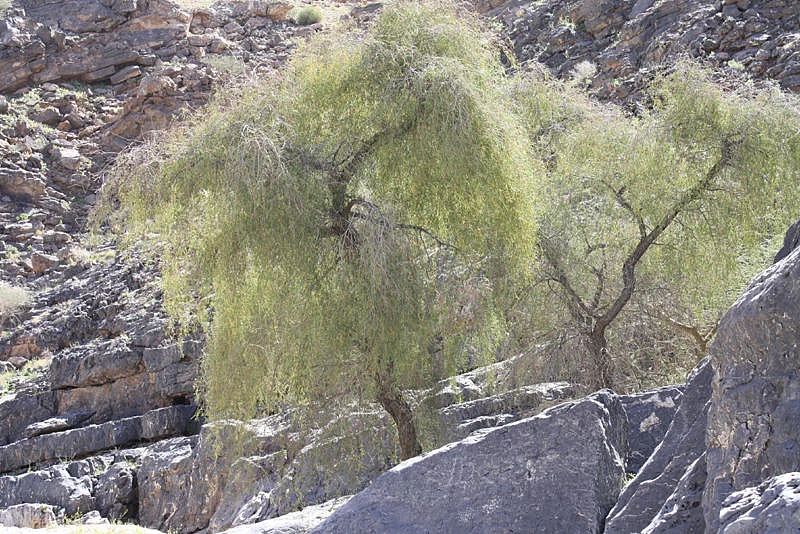Experts in Oman believe that the practice of planting exotic tree varieties may environment in the country.
According to Dr. Michael Robinson, an ecologist and associate professor in the biology department at Sultan Qaboos University (SQU), the non-native trees can be aggressive competitors for nutrients and water, and a few even emit defensive chemicals that discourage native species from germinating and growing near to them.
“In a decade or two such invasive plants can replace the local species creating new landscapes, and possibly causing the extinction of resident organisms,” revealed the SQU ecologist in a statement issued Saturday.
Oman’s most famous example of such a species is the ‘ghaf al bahri’, Prosopis juliflora. Planting foreign trees helps stabilise soil and reduce erosion, but the root and leaf chemistry may have adverse effects on the soil organisms. Pests and pathogens associated with introduced species have caused massive tree death in forests on other continents.
Given such dangers, Dr. Robinson recommends consultation with local ecologists or botanists before planting alien trees.
Dr. Robinison has conducted studies on annual plant ecology, desert nitrogen cycles, lichens, the importance of trees in sustaining biodiversity in arid lands and the biology and conservation of the Arabian Tahr.
According to him, indigenous trees play a key role in protecting biodiversity in Oman, like elsewhere in the world, by providing environments and resources for hundreds of species and thousands of individuals in the ecosystems.
“Trees are focal points of biological activity in hot deserts. Their foliage reduces solar radiation providing many cooler temperatures under the leaves and on the branches. This attracts many small animals that use the trees as shelter from extreme heat. The leaves also intercept rainfall and channel it down the smaller branches, onto the main trunk and downward into the root zone. In treeless areas much of the water is lost by runoff which carries soil and nutrients into the wadis”, he said.
Underscoring the importance of trees in maintaining biodiversity, Dr. Robinson pointed out that research in Saudi Arabia had suggested that Oman’s most renowned symbol, Al Maha the White Oryx, might not survive the summer without the shade provided by trees.
The tree root zone is home to a tremendous diversity of bacteria, fungi, and very small animals, each with an important job to do in decomposing dead organic matter, producing nutrients and cycling elements.
Without these processes sterile mineral soil cannot be converted into a naturally fertilized medium for plant growth. In a desert landscape, soil fertility is usually greatest under trees and other perennial species, while open areas are poorer in nutrients and biodiversity.
Four trees are common in the lowlands of northern Oman: samr (Acacia tortilis), sidr (Ziziphus spina-cristi), ghaf (Prosopis cineraria) and sarh (Maerua crassifolia). Samr is the most abundant and widespread. Loss of native trees is progressing with the accelerated development of Oman. Infrastructure projects, recreation, agriculture and home construction eliminate many native trees each year.
“Whenever possible, planners should leave them in place to provide shade and beauty to the new development and to provide a buffer against biodiversity loss”, Dr, Robinson said.
Domestic livestock can also harm trees by browsing the foliage and reproductive structures so severely that few viable seeds are produced and seedlings are quickly consumed by animals leaving little chance for young plants to grow to replace the old individuals.
Hungry livestock also eat the fallen leaves and seed pods, removing much of the leaf litter that is the main energy and chemical source for the decomposers, resulting in decreased rates of nutrient cycling.
“Large trees provide shelter and food for thousands of pollinator insects. These pollinators are not only essential for the survival of many desert plants, they also pollinate many agricultural food crops. Removal of trees and other vegetation from areas outside the farms decreases the diversity and number of pollinators and consequently food production”, Dr. Robinson concluded.
Sign up for the Daily Briefing
Get the latest news and updates straight to your inbox
Network Links
GN StoreDownload our app
© Al Nisr Publishing LLC 2025. All rights reserved.
